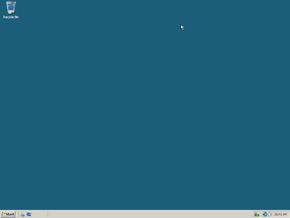Build list legend
Non-existent page
| Version of Microsoft Windows | |
 | |
| OS family | Windows NT |
|---|---|
| Version | 6.0 |
| Codename | Longhorn Server |
| Architecture | x86, x64, IA-64 |
| Latest build | 6.0.6003.23220 |
| Release date | 2008-02-27 |
| Support end | 2020-01-14 2023-01-10 (with Extended Security Updates) 2024-01-09 (with Extended Security Updates only for Azure customers) 2026-01-13 (Extended Security Updates under Grandfathered Premium Assurance Support) |
| Client counterpart | |
| Windows Vista | |
| Replaces | |
| Windows Server 2003 | |
| Replaced by | |
| Windows Server 2008 R2 | |
Windows Server 2008 is the server counterpart of Windows Vista, which was released on 27 February 2008, a little over a year after its client counterpart. It replaces Windows Server 2003 and was replaced by Windows Server 2008 R2. It was the first version of Windows Server to include Hyper-V and the Core SKU which excludes Desktop Experience components and also the last version of Windows Server to support the x86 architecture.
Windows Server 2008's client counterpart, Windows Vista, was initially intended to be a minor client-only release that would ship in-between Windows Server 2003 (then known as Windows .NET Server) and the next-generation operating system, then codenamed Blackcomb, but eventually, Longhorn was promoted to a major release that would ship in both client and server releases. By 2004, it was predicted that Longhorn client would ship in 2006 with Longhorn Server shipping a year later, in line with Longhorn SP1.
Little is known about Microsoft's plans for Longhorn Server before the August 2004 development reset, as they didn't speak much about it. The nature of the server market is that upgrade cycles are different than on workstations, and the team that works on features for Windows Server was still focused on Windows Server 2003 (and later Windows Server 2003 R2). The leaked builds that we have of pre-reset Longhorn Server essentially seem to be identical to client versions of Longhorn, merely with the edition branding of Server, and applications/features such as IIS lifted straight from Windows Server 2003, suggesting that development on the server components of the OS had yet to take place. One may speculate as a result of this that at the time of some of these builds, Longhorn Server was still not a serious project, but judging by the fact that build 4031 (July 2003) comes from the build lab dedicated to IIS, it is likely that Longhorn Server development had started, but was not a priority among either the Longhorn or Windows Server groups.
After the development reset, no builds of Longhorn Server are leaked until Beta 1 (build 5112), which was released to Technical Adoption Program (TAP) partners, but two builds of Longhorn Server have been seen online, namely build 5077 (May 2005) and 5085 (June 2005). 5077 shows nothing notable other than Windows Server "Longhorn" branding over the Initial Configuration Tasks applet (pre-reset builds of Longhorn Server typically used either Windows Server 2003 or Windows .Net Server bitmaps for branding purposes), but 5085 shows one of the headline features of Longhorn Server, namely Server Core (then known as Windows Server Foundation), which features a slimmed-down OS with no Explorer shell. Since Server Core depends on Longhorn's componentization, it's likely to have been in the planning stages before the reset, but thanks to the chaos in Microsoft at the time, didn't become a reality until after.
As Windows Longhorn Server development continued, focus shifted as well to another new feature, Windows Server Virtualization, code-named Viridian, first shown at WinHEC 2006. One of Viridian's main advantages over Virtual Server 2005 was support for 64-bit guest operating systems. Viridian did not ship with the RTM build of Windows Server 2008 (which was, as predicted, the same code as Vista SP1), but did become available later as Hyper-V. After Windows Server 2008 released, it and Windows Vista used the same updates, including Service Pack 2 and the Platform Update, reunifying the client and server codebases for Windows.
Just like its client counterpart, Windows Server 2008 used Longhorn, by exactness "Longhorn Server", as its codename. However, even after Longhorn has been replaced with Vista in 2005, "Longhorn Server" was still used as codename of Server 2008 until its removal in build 6001.16659 in 2007, two years after its client counterpart and a few months after the release of Windows Vista.
The earliest build to identify itself as Windows Server 2008 was build 6001.16606.
Microsoft recommends Windows Server 2008 to be installed on a system with an x86 processor with a speed of at least 1 GHz (1.4 GHz for x64) or an Intel Itanium 2, at least 512 MB of RAM, 10 GB of hard drive space, a SVGA or better display adapter, and a DVD-ROM drive. Windows Server 2008 drops support for systems without ACPI.
Intel CPUs whose microarchitectures are based on Haswell or later are not supported on Windows Server 2008.[1] Numerous issues relating to certain services or applications failing to start on the affected CPUs have been reported by various users, with extreme cases often leading to potential bugchecks.[2] The KB4493471 update contains a new version of the HAL (hardware abstraction layer) that fixes most of these issues.
Windows Server 2003 R2, earlier operating systems, and x86 versions of Windows Server 2008 are not affected by the aforementioned problems.
Build list legend